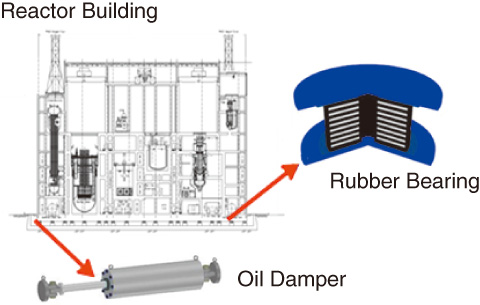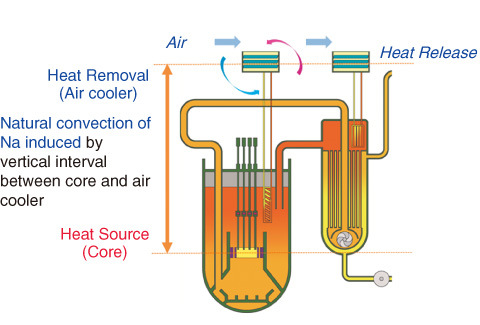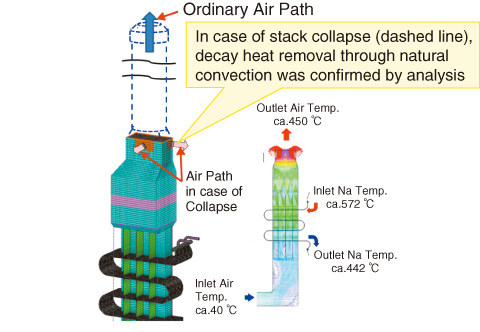
Fig.2-2 Advanced seismic isolation system

Fig.2-3 Decay heat removal with natural convection in SFR

Fig.2-4 Air cooler analysis in case of stack collapse
The integrity of major components of the Japan Sodium-cooled Fast Reactor (JSFR) against the TEPCO’s Fukushima Daiichi NPS seismic conditions is confirmed thanks to the adoption of an advanced seismic isolation system that mitigates the horizontal seismic force to a reactor building by using thicker laminated rubber bearings with a longer period and oil dampers (Fig.2-2), which improved the damping performance. Furthermore, against subsequent tsunamis, JSFR is aiming to improve the safety characteristics by adopting a decay heat removal system with natural convection.
Because sodium is liquid under a wide temperature range, it exhibits remarkable heat transfer performance, which leads to a large temperature difference between the sodium inlet and outlet of the reactor. Therefore, decay heat can be removed by natural convection of the coolant sodium due to the density difference that is induced by the vertical interval between a core and an air cooler; in fact, the final heat sink is air (Fig.2-3). Thanks to the natural convection decay heat removal system (DHRS), the JSFR requires no active components such as pumps or blowers, which depend heavily on a power supply. Thus, the inlet/outlet dampers at the air cooler alone can operate the JSFR DHRS using only an emergency DC battery in the reactor building.
Furthermore, the natural convection DHRS has an advantage in terms of the robustness of an emergency AC power supply against tsunamis. In the event of an emergency shutdown in a sodium-cooled fast reactor, structural materials must be protected against thermal shock due to a rapid temperature transition in the sodium. For this reason, some sodium flow must be maintained after reactor shutdown. The conventional forced circulation DHRS has pony motors at the main pumps. The pony motors have to be activated within several seconds using diesel generators (DGs) to control the sodium flow if the off-site power supply is lost. Because the DGs require an auxiliary system consisting of a lubricating oil system and a sea water cooling system, the sea water system, including the water intake components, must be protected against tsunamis. On the other hand, because the JSFR does not require this type of quick DG initiation thanks to the natural convection DHRS, a gas turbine generator (GT) with self-air cooling can be used as the emergency power supply, even though it takes more than 30 s to activate. Hence, the JSFR emergency AC power supply can withstand even a sea water cooling system failure.
In addition, decay heat removal can be maintained even in the event of stack collapse due to an airplane attack as long as the vertical interval between the heat exchanger tubes of the air cooler and an air path at the bottom of the stack above the air cooler can be maintained (Fig.2-4).
In the future, the JSFR design concept will be improved to satisfy the Generation IV SFR safety design criteria based on these studies.
The present study was conducted as part of the “Technical development program on a commercialized FBR plant” commissioned by the Ministry of Economy, Trade and Industry (METI).
<Previous: 2 Research and Development of Advanced Nuclear System | Next: 2-2 >